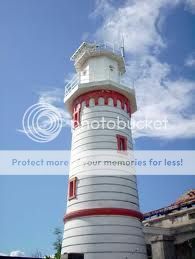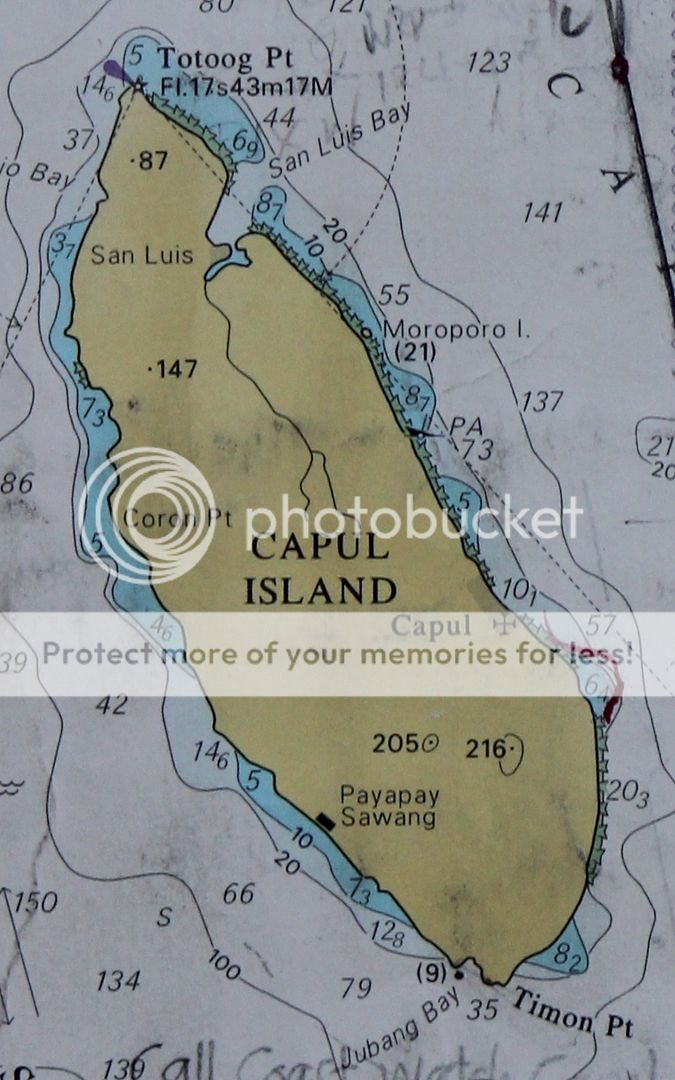http://en.wikipedia.org/wiki/San_Bernardino_Strait
Spanish map showing the route of Galleon Trade from Manila to Acapulco, Mexico via Capul Island and San Bernardino Strait.
Spanish Map showing the Galleon Trade Route to San Bernardino Strait on their long voyage to Acapulco Mexico. The Galleon ship stop at Capul Island to wait for favorable current that will bring them out to Pacific Ocean on their voyage to Acapulco.
Spanish Map showing the route from Manila to Capul Island and San Bernardino Strait and then the long voyage in the Pacific Ocean to reach the port of Acapulco, Mexico.
* * * * * * * * * * * * * * * * * * * * * ** * * * * * * * * ** * * * * * * **
Capul is a 5th class island municipality in the province of Northern Samar, Philippines. Prior to is founding as a town, Capul island itself with its lighthouse built on the island, served as a guidepost for the Acapulco (Mexico) - Manila Galleon trade vessels passing through the treacherous waters of San Bernardino Strait.
It also served as the capital of Samar from 1848 to 1852. The name Capul came from the word Acapulco, an old trading port in Mexico. Capul is the only town in the province of Northern Samar with distinct dialect "Inabaknon" instead of Waray-Waray, the native language spoken by the locals of Samar island.
The church of Capul during the Spanish Colonial Period, is dedicated to St. Ignatius of Loyola and it surrounded by a square fort with bulwarks of dissimilar designs. The church structure was actually the third that was built on the site. The first two structures, made of hard wood and nipa roofs, were razed when Moro pirates plundered the island in 1615 and 1768.
In 1781, Fr. Mariano Valero, a Spanish architect-priest led the restoration of the church and built the stone stonewall fortress similar to that in Intramuros, Manila that would fortify it against Moro attacks.
Capul Island Lighthouse
Indigenous Language
Capul has a different language from the rest of Northern Samar and the rest of the Eastern Visayas. The native language in the island municipality is Inabaknon. Inabaknon has been classified by linguist as a Sama language related to the Sama language of Mindanao, rather than a Visayan language. Nonetheless the Capul people understand the Waray language, as spoken by the majority of the people in Northern Samar.
http://en.wikipedia.org/wiki/Capul,_Northern_Samar
Ancient fortress church of Capul, Northern Samar
Inquirer Visayas
CAPUL, Northern Samar—This ancient church
in Capul town in Northern Samar has withstood the passage of time Although it remains a place of worship,
the St. Ignatius de Loyola Church was once a place of refuge for natives from
Moro marauders.
On Aug. 5, a marker mounted on the wall of
the church edifice was officially unveiled by the National Historical Commission
of the Philippines (NHCP), declaring it a historical site and recognizing it as
a “good example of a fortress church during the Spanish era.”
“The marker actually is there to remind us
of what transpired here during the Spanish times,” said Ludovico D. Badoy, NHCP
executive director.
Capul, an island of 12 barangays, is a
fifth-class municipality (annual income: P15 million-P25 million) with a total
land area of 35 square kilometers. It is an hour-long boat ride from the
mainland’s Allen town, 48 kilometers from the capital of Catarman.
Galleon trade
Originally, Capul was called Abak.
According to folklore, its present name was derived from “Acapulco.”
During the galleon trade between Manila
and Acapulco during the Spanish colonization, many boats would drop anchor at
Capul, waiting for the current to flow outward to the Pacific Ocean before they
start their long voyage to Acapulco in Mexico.
On Nov. 8, 1870, the island became a
parish by decree of the Bishop of Cebu, in accordance with the Royal Decree on
Nov. 12, 1874. It was under the administration of the Franciscan Order.
Even before the decree was issued, two
churches of light materials had been built in Capul on separate occasions but
were razed by Moro pirates who plundered the island in 1615 and 1768. Fr. Juan
Isandi, who was assigned to Capul, was killed in the Moro attack of 1768.
In 1781, a Spanish architect-priest, Fr.
Mariano Valero, led the restoration of the church and built a stonewall fortress
around it in the shape of a cross. The church was known as “Fuerza de Capul.”
An 11-meter stone belfry was constructed
at the left side of the church and a stone watchtower overlooking the sea was
erected on top of a huge rock, about 150 meters away.
The tower sentinel would blow a “budyong”
or conch to warn the people of danger like the coming of Moro pillagers. The
people would then rush to the church to seek shelter, bringing along water and
food provisions.
The windows and doors of the church, which
were made of thick wood materials, would then be closed, and everybody would
wait for the attack. Others were also prepared to fight back.
Those posted at the bastions on the left and right corners of the fortification
were ready to fire cannons.
Remnants
As the enemies came closer, some would
open small windows and shoot at them. Two of the windows are still there at the
rear of the building. Three others are five feet above the base of the
deteriorating belfry.
Today, the building at the church
courtyard at the right is already in ruins. The fortress wall, although
dilapidated, still stands. At the left side is the parish priest’s residence. As a historical site, the Capul church is
protected by law and government funds can be used for its preservation and
conservation, says Badoy of the NHCP.
In a speech during the unveiling ceremony,
Gov. Paul Daza said the marker “is just one instance of reminding us how truly
rich our history and culture is.” “All of us, as Filipinos, should always be
reminded of the true heritage and culture of our country,” he added.
************************88********
View of Capul Island from the northwest and west directions of Capul Island
The Lighthouse at Capul Island
Passenger Bance travelling between Sorsogon Province and Capul Island.
The northwest part of Capul Island. Behind in the far distance is the island of Dalupiri.
View of Capul island from south and south east of Capul.
Other photos of Capul Island
Youtube Videos of Capul Island
Related web links :
Capul, Northern Samarm - From Wikipedia, the free encyclopedia
http://en.wikipedia.org/wiki/Capul,_Northern_Samar
Historical Capul Island
Capul Island Samar
Ivan about Town
Farola Series: Faro de Isla Capul (Capul Island Lighthouse
Allen Samar - Villa Conchita Beach Resort
* * * * * * * * * * * * * * * * * * * * * * * * * ** * * * * * * * * * * * * * * * * * * *
View from the sea of other islands near Capul Island
Dalupiri island
The municipality of San Antonio in the Island of Dalupri in the province of Northern Samar, Philippines. A naturally blessed island with pristine white beaches and beautiful caves, rich culture, diverse interests, proud heritage and colorful history waits you, promising the most enchanting travel experience in the region. This is a beautiful and undisturbed paradise island in Northern Samar develop as premier tourist destination.
North part of Dalupiri island
Bato, San Nicolas, Dalupiri island
Dalupiri Island Resort
Dalupiri Island
Lagbangan Lake in Dalupiri island
Dalupiri Island
Related web links :
Dalupiri Island Samar
Haven of Fun Beach Resort in San Antonio, Dalupiri island.






































































